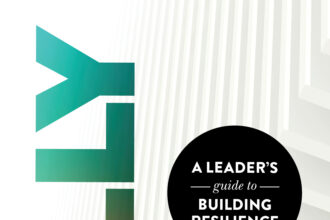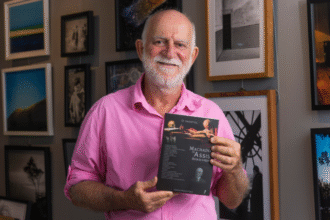In “Under the Aquarium”, writer Janaína Santana takes the reader on a deep dive into the lives of three sisters, Tina, Lena and Tetê, who face personal and family challenges imposed by past traumas. The narrative, set in a small fictional town in the interior of Minas Gerais, explores complex emotions and the search for overcoming as each of the sisters deals with their scars in unique ways. The novel, marked by the author’s sensitivity, portrays how pain, loss and reconciliation form the process of redefining life, offering a reflection of the reality of many who, even outside their “ideal habitat”, move forward.
You chose the metaphor of a “fish out of water” to set the emotional tone of the book. What led you to use this sense of displacement as a starting point for the story of Tina and her sisters?
The initial idea of the book was to tell a story of overcoming obstacles, of rediscovering oneself, and the use of metaphors is a powerful strategy for composing any narrative. When I decided that one of the characters would be a former swimmer , I came to the conclusion that the metaphor of a “fish out of water” would be perfect.
Throughout the novel, you present the pain and new beginnings of three women marked by different forms of trauma. What was the process like for you to give voice and emotional depth to these intimate experiences?
For me, the entire process of creation and writing was something new. Specifically in the parts where it was necessary to narrate the characters’ feelings, I tried to do a kind of “empathy exercise” by trying to experience how I would feel if the situation being narrated were happening to me. To my surprise, this experience ended up being quite profound and at many moments I was moved by the situations experienced by the characters.
Tina, your protagonist, saw her dream as an athlete crumble in the face of abuse and frustration. How do you think her story can support and inspire readers who have faced similar situations?
First of all, the idea is to bring up an uncomfortable topic for discussion: abuse happens in the most unexpected places possible. Secondly, to show that when this happens, feelings like guilt and shame tend to prevail… that’s how it was for Tina and it ended up costing her her dream. However, the idea is to show that it doesn’t always have to be like this. As difficult as it may be (and it certainly is extremely difficult, as Tina’s experience shows) facing the trauma with the help of other people you trust can be a path and a less cruel alternative to going through similar situations.
The setting in a fictional city in the interior of Minas Gerais has a nostalgic and, at the same time, universal charm. Why was this setting important to you when building the characters’ journey?
The idea of creating a fictional city was influenced by one of my favorite writers, Erico Verissimo (the city of Santa Fé, in O Tempo e o Vento/ Cidade de Antares, in Incidente em Antares), and I confess that I found it comfortable to use a fictional setting because I had more freedom to create. The contrast between this small city in the interior of Minas Gerais, with the state capital and with Boston, is fundamental to composing the saga of overcoming and exploration experienced by the characters.

The sisters have different trajectories — one is an engineer, the other a doctor, and the other a swimmer — but they share absences and wounds. How do you see the strength of family ties even when there is pain, silence, and disagreement?
The idea was to show the power of female relationships, which in this case were also family relationships. I strongly believe in both. In my personal life, I have always had a lot of family support to overcome many of the obstacles I faced, and I also had the reference of many fearless women to serve as inspiration. Perhaps the glimmer of hope brought by the book is to demonstrate the strength that exists in this type of relationship.
In many scenes, coffee appears as a symbol of sharing, pause and even revelation. Do you remember any personal moment when a simple conversation around a cup also transformed you?
As a true Minas Gerais native, conversations at the coffee table have always been present in my life. The theme of the book itself came to me when, while having afternoon coffee with my mother and sisters, I thought: “why not have the story of three sisters as the central theme of the book?”
As a former amateur athlete, you brought to the narrative the experience of the body, discipline and frustration in sport. How much of your own story is there in the pages of Under the Aquarium?
Bringing sport into the narrative was a way of “giving my signature” to the book, since I have been a runner and triathlete for 16 years. The passages in which I mention training, discipline, and anxiety are certainly passages in which I speak with authority as someone who has gone through similar situations, even if in another sport.
Your book touches on sensitive topics like abuse, alcoholism, and grief, but it still offers hope. What do you hope the reader takes away with them when they finish the book?
The idea was always for the book to portray real-life stories, and real life (of all people) is permeated by these difficult topics, which are often treated as taboo. In my construction, I sought to bring up these sensitive topics in a light-hearted way, so that people could identify with them, but at the same time understand that obstacles do not mean the absence of hope. The goal was always to show that, although life is a “fairy tale”, there are alternative ways to escape total frustration.
Follow Janaína Santana on Instagram





